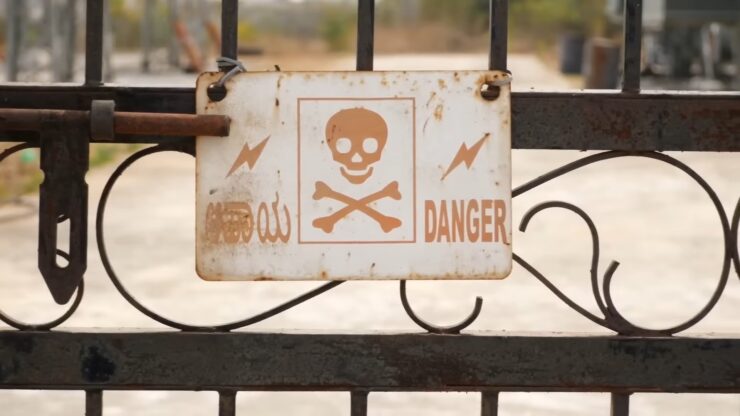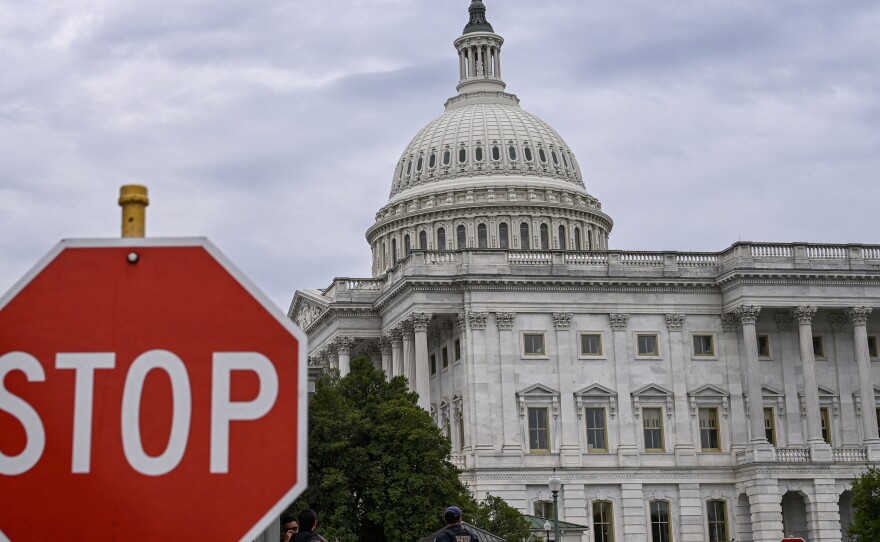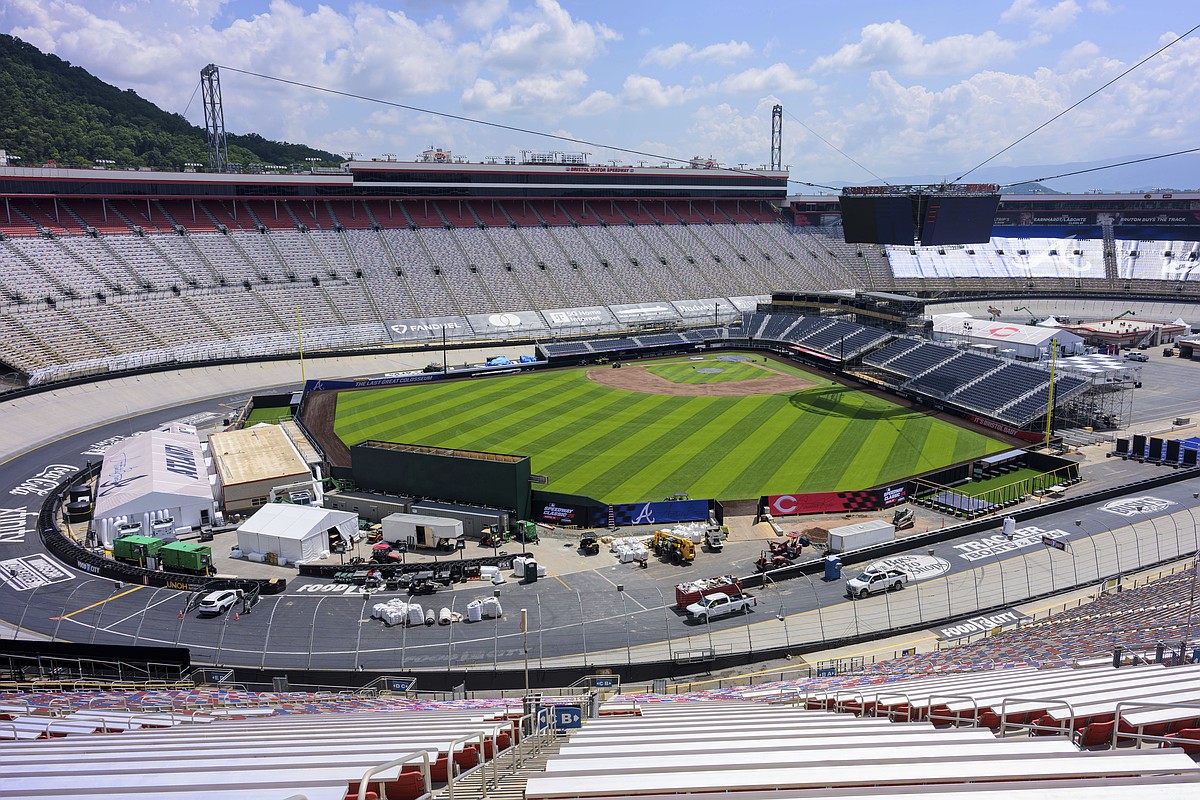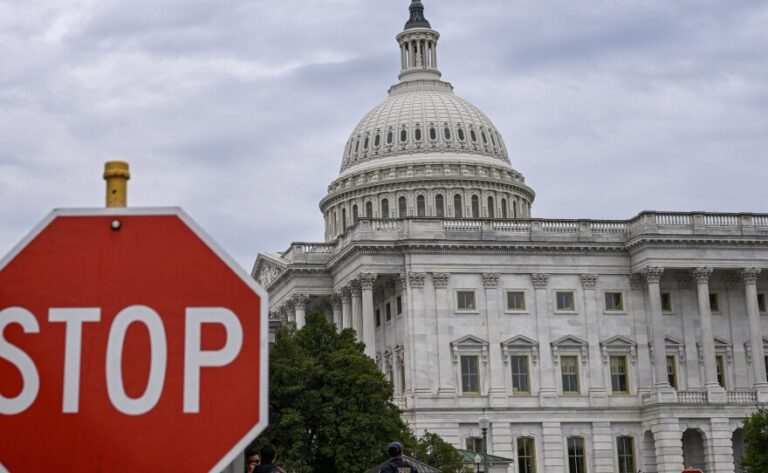The Global Peace Index (GPI) is an annual report published by the Institute for Economics and Peace (IEP) that ranks 163 countries based on their level of peacefulness. It looks at 24 indicators grouped into categories to measure three aspects of peace: the absence of violence, the effectiveness of government, and the extent of militarization.
These indicators are divided into four main categories: societal safety and security, militarization, international conflict, and domestic and human rights. Here are some of the key factors evaluated in the Global Peace Index:
- Violent Deaths: The number of deaths caused by violence.
- Terrorism Impact: The influence of terrorism on a country.
- Nuclear Capability: The presence of nuclear weapons or capabilities.
- Peaceful Conditions: The overall state of peace within a country.
- Social Security: The level of safety provided to citizens.
- Internal Conflicts: Presence of conflicts within the country.
- International Relations: How a country interacts with other nations.
Now, let’s delve into the 20 most precarious countries in the world in 2024.
20. Mexico
Historical Context: Mexico’s battle against drug cartels and organized crime can be traced back to the late 20th century. The country’s strategic location, sandwiched between the world’s largest drug-consuming nation, the United States, and the drug-producing regions of South America, made it a prime transit and drug-producing country.
The Rise of Cartels: Several powerful cartels emerged over the years, including the Sinaloa, Juárez, Tijuana, and Gulf cartels, among others. These organizations established vast networks, controlling everything from the production and transportation to the distribution and sale of drugs. Their influence extended beyond narcotics, delving into other illegal activities such as human trafficking, oil theft, and extortion.
Violence and Territory: Competition for control of lucrative drug routes, known as “plazas,” led to violent confrontations between rival cartels. Cities like Ciudad Juárez and Tijuana became epicenters of violence as cartels battled for dominance. The violence wasn’t limited to inter-cartel conflicts; journalists, politicians, and law enforcement officials were often targeted, leading to a climate of fear and intimidation.
Government Intervention: In 2006, then-President Felipe Calderón launched a military-led initiative to combat the cartels. This move led to the deployment of tens of thousands of troops across the country. While it resulted in the capture or killing of several high-profile cartel leaders, it also inadvertently led to the fragmentation of some cartels into smaller, often more violent, factions. This splintering further complicated the landscape, leading to more sporadic and unpredictable bouts of violence.
Human Rights Concerns: The military’s involvement in domestic law enforcement during this campaign raised serious human rights concerns. There were numerous reports of extrajudicial killings, torture, and disappearances. The line between the cartels and the state became blurred in some regions, with allegations of collusion between law enforcement and organized crime groups.
Economic Impact: The pervasive influence of cartels has had a profound economic impact. While they have injected money into certain local economies, the overall effect on the country has been negative. Tourism, a significant source of revenue for Mexico, has been affected in areas with high levels of cartel activity. Investors often hesitate to invest in regions with high crime rates, leading to lost opportunities and stunted economic growth.
Current Scenario: While the situation remains complex, there have been efforts to adopt a more holistic approach to the problem. This includes addressing the root causes of the drug trade, such as poverty and lack of opportunities, and focusing on community policing and social programs. However, the power and influence of the cartels, combined with external demand for narcotics, mean that the challenges persist.
In conclusion, Mexico’s struggle against drug cartels and organized crime is multifaceted, deeply rooted in its history, and influenced by both internal and external factors. The path to resolution requires a combination of law enforcement, socio-economic development, and international cooperation.
19. Brazil
Historical Backdrop: Brazil’s history is marked by stark socio-economic disparities, a legacy of colonialism, and rapid urbanization in the 20th century. These factors, combined with other socio-political dynamics, have contributed to the country’s complex crime scenario.
Urban Centers and Crime: Brazil’s urban centers, notably Rio de Janeiro and São Paulo, have seen a proliferation of favelas (informal settlements or slums). These areas often lack basic infrastructure and services, leading to socio-economic vulnerabilities. The state’s limited presence in these zones has allowed criminal gangs to establish dominance, effectively controlling vast territories and populations.
Gang Culture: Several notorious gangs, such as the Red Command (Comando Vermelho) and the First Capital Command (Primeiro Comando da Capital), have their roots in the prison system but have expanded their operations to control drug trafficking routes, extortion rackets, and other criminal enterprises in urban areas. These gangs often engage in turf wars, leading to spikes in violence as they vie for control of lucrative territories.
Drug Trafficking: Brazil is a significant transit country for cocaine destined for Europe and other parts of the world. Its vast borders, especially with cocaine-producing countries like Colombia, Bolivia, and Peru, make it a strategic point in the global drug trade. Internally, the demand for crack cocaine and other narcotics has surged, further fueling the drug trade and associated violence.
Political Corruption: Brazil has been rocked by several high-profile corruption scandals in recent years. Operations like “Lava Jato” (Car Wash) exposed widespread corruption involving top politicians, business leaders, and state-owned enterprises. This endemic corruption has eroded public trust in institutions and diverted crucial resources, indirectly exacerbating crime and insecurity.
Policing Challenges: Brazil’s police forces have been criticized for their heavy-handed tactics, especially in favelas. Operations often result in civilian casualties, further straining the relationship between law enforcement and communities. On the flip side, police officers frequently face dangerous situations and are often targeted by gangs, leading to one of the highest police mortality rates globally.
Socio-economic Factors: High unemployment rates, especially among the youth, and limited access to quality education and opportunities, have made criminal enterprises an attractive option for many. The allure of quick money, combined with societal pressures, has driven many young Brazilians into the clutches of organized crime.
Current Efforts and Challenges: While Brazil has made efforts to address its crime challenges – through police reforms, social programs, and anti-corruption drives – the road to stability is long. Initiatives like “Pacifying Police Units” (UPPs) in Rio aimed to reclaim territories from gangs and restore state presence, but their long-term effectiveness remains debated.
In conclusion, Brazil’s crime landscape is a product of historical, socio-economic, and political factors. Addressing the root causes, rebuilding trust between communities and law enforcement, and ensuring political transparency are crucial steps towards a safer and more stable Brazil.
18. North Korea
Historical Context: Emerging from the ashes of World War II and the subsequent Korean War, North Korea, officially known as the Democratic People’s Republic of Korea (DPRK), has been under the authoritarian rule of the Kim dynasty since its inception. This lineage, starting with Kim Il-sung, followed by Kim Jong-il, and currently led by Kim Jong-un, has maintained a tight grip on the nation, shaping its unique and often enigmatic identity on the global stage.
Veil of Secrecy: North Korea is often referred to as the “Hermit Kingdom” due to its self-imposed isolation from the rest of the world. The state exercises strict control over information, both entering and leaving the country. Foreign media is heavily restricted, and the domestic press is state-controlled, painting a picture of the world that aligns with the regime’s narrative. This lack of transparency makes it challenging for the international community to understand the true nature of events within its borders.
Nuclear Ambitions: One of the most significant concerns for global security has been North Korea’s pursuit of nuclear weapons. Over the years, the country has conducted multiple nuclear tests, leading to widespread condemnation and sanctions from the international community. These actions are often viewed as a means for the regime to assert its dominance, deter perceived threats, and gain leverage in international negotiations.
Strained International Relations: North Korea’s actions, particularly its nuclear tests and missile launches, have led to strained relations with many countries, most notably South Korea, Japan, and the United States. The armistice agreement that ended the Korean War in 1953 was never followed by a peace treaty, leaving the Korean Peninsula technically still at war. Periodic skirmishes and aggressive rhetoric have kept tensions high for decades.
Human Rights Abuses: Reports from defectors, international organizations, and satellite imagery have painted a grim picture of human rights within North Korea. Allegations include forced labor camps, public executions, severe restrictions on freedom of movement and expression, and punishment for attempting to defect. The regime’s control extends to every facet of its citizens’ lives, with a pervasive surveillance system and a culture of fear.
Militarization: North Korea maintains one of the largest standing armies in the world, with military service being mandatory for its citizens. The regime’s “military-first” policy prioritizes the armed forces in resource allocation, even in times of economic hardship or famine. This militarization serves both as a deterrent against external threats and as a tool for internal control.
Economic Challenges: While exact figures are hard to ascertain due to the country’s secretive nature, North Korea faces significant economic challenges. International sanctions, combined with limited resources and a focus on military expenditure, have led to periods of famine and economic hardship. However, the regime has often prioritized its military and nuclear ambitions over the well-being of its citizens.
17. Pakistan
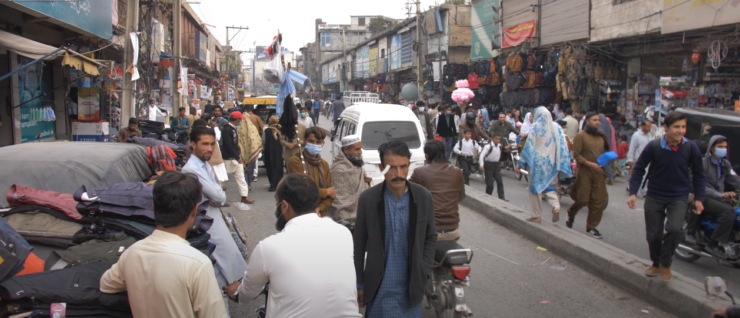
Historical Overview: The modern state of Pakistan was carved out of British India in 1947, following a demand for a separate homeland for Muslims. Since its inception, Pakistan has experienced a tumultuous political journey, marked by military coups, democratic movements, and regional conflicts.
Extremist Groups: Over the decades, various extremist factions have found a foothold in Pakistan. Groups like the Tehreek-e-Taliban Pakistan (TTP), Lashkar-e-Taiba, and Jaish-e-Mohammed have been involved in numerous attacks both within Pakistan and abroad. The presence of these groups has often been linked to the nation’s past policies, where certain factions were allegedly supported by state agencies for strategic depth in Afghanistan or as leverage against India. The repercussions of these policies have been profound, leading to internal security challenges and international scrutiny.
Relations with India: Pakistan’s relationship with its eastern neighbor, India, has been fraught with tension since both nations gained independence. The two countries have fought multiple wars, primarily over the disputed region of Kashmir.
While there have been periods of diplomatic engagement and attempts at peace, incidents like the Mumbai attacks in 2008 and the Pulwama attack in 2019 have strained relations. The nuclear capabilities of both nations add a layer of complexity to their bilateral dynamics.
Internal Political Instability: Pakistan’s political landscape has seen frequent shifts between civilian and military rule. Military coups in 1958, 1977, and 1999 have disrupted democratic processes, leading to periods of authoritarian governance. While the country has witnessed a relatively stable democratic transition in recent elections, allegations of electoral manipulation and the perceived influence of the military in politics remain contentious issues.
Sectarian Violence: Pakistan’s diverse religious landscape includes a majority Sunni population with significant Shia, Christian, Hindu, and other minority communities. Over the years, sectarian tensions, particularly between Sunni and Shia groups, have erupted into violence.
Organizations like Sipah-e-Sahaba Pakistan (SSP) and Lashkar-e-Jhangvi have been implicated in attacks against the Shia community. The state’s blasphemy laws have also been a point of contention, with allegations of misuse against religious minorities.
Economic and Social Challenges: Beyond security and political issues, Pakistan faces significant economic challenges. While the country possesses a young and vibrant population, unemployment, inflation, and fiscal deficits have hindered growth. Additionally, issues like water scarcity, education deficits, and health infrastructure gaps pose long-term challenges.
16. Turkey
Historical and Geographical Context: Straddling the continents of Europe and Asia, Turkey has historically been a bridge between the East and the West. Its unique position, bordering countries like Greece, Bulgaria, Syria, Iraq, Iran, Armenia, and Georgia, has made it a focal point of geopolitical interests and conflicts for centuries.
Geopolitical Significance: Turkey’s location, controlling the vital Bosporus Strait, gives it significant strategic importance. This strait is a critical passage for naval vessels and international trade, linking the Black Sea to the Mediterranean. Furthermore, Turkey’s proximity to the oil-rich Middle East and its membership in organizations like NATO amplify its geopolitical significance.
The Kurdish Conflict: One of the most enduring challenges Turkey has faced is the Kurdish issue. The Kurds, an ethnic group spread across Turkey, Syria, Iraq, and Iran, have long sought greater autonomy and, in some cases, independence.
In Turkey, the Kurdistan Workers’ Party (PKK), labeled a terrorist organization by both Turkey and many international entities, has been engaged in an armed conflict with the Turkish state since the 1980s. This conflict has resulted in tens of thousands of casualties and has seen periods of heightened violence interspersed with attempts at peace talks.
Neighboring Conflicts: Turkey’s southern border with Syria has exposed it to the ramifications of the Syrian civil war. The rise of ISIS and the subsequent involvement of various Kurdish militias in the fight against the extremist group further complicated Turkey’s position. Concerned about the strengthening of Kurdish forces along its border, Turkey has conducted several military operations in Syria.
Political Instability and Coups: Turkey’s political landscape has been marked by periodic military interventions. The coups of 1960, 1971, and 1980 were significant disruptions, but the most recent attempted coup in 2016 has had profound implications for the nation’s politics.
Blaming the Gülen movement for orchestrating the coup attempt, President Recep Tayyip Erdoğan’s government initiated widespread purges, targeting not only military personnel but also academics, journalists, and civil servants. This has led to concerns about democratic backsliding, human rights abuses, and the concentration of power.
Post-Coup Political Landscape: Following the 2016 attempted coup, Turkey has witnessed a consolidation of power under Erdoğan. The 2017 referendum, which shifted Turkey from a parliamentary to a presidential system, has been a point of contention, with critics arguing it grants the president disproportionate authority.
15. Nigeria

Background: Nigeria, often referred to as the “Giant of Africa” due to its large population and economy, is a diverse nation with over 250 ethnic groups. Its vast landscape, from the Sahel in the north to the lush Niger Delta in the south, has been both a source of wealth and conflict.
Boko Haram and the Northeastern Crisis: Boko Haram, which began as a religious movement in the early 2000s, transformed into a violent extremist group around 2009. Its name, often translated as “Western education is forbidden,” reflects its opposition to secularism and Western influences. The group’s activities, primarily in the northeastern states of Borno, Yobe, and Adamawa, have led to the deaths of tens of thousands and the displacement of millions.
The group’s tactics have included suicide bombings, mass kidnappings (most notoriously the Chibok schoolgirls in 2014), and village raids. In response, the Nigerian military, sometimes in collaboration with neighboring countries like Chad and Cameroon, has launched operations to counter the group. While Boko Haram has been significantly weakened, splinter factions, such as the Islamic State West Africa Province (ISWAP), continue to pose threats.
Communal Clashes: Beyond the Boko Haram insurgency, Nigeria grapples with intermittent communal violence, often framed as conflicts between predominantly Muslim Fulani herdsmen and Christian farmers. These clashes, particularly in the Middle Belt region, arise from disputes over land, resources, and local political power. Climate change, which has affected grazing patterns and land availability, has further exacerbated tensions. These conflicts, while sometimes cast in religious terms, are deeply rooted in socio-economic and environmental factors.
Piracy in the Gulf of Guinea: The Gulf of Guinea, off Nigeria’s southern coast, has become a hotspot for maritime piracy. Nigeria’s Niger Delta region, rich in oil, has historically seen tensions between local communities, militants, and oil companies. Some of these militant groups, seeking a share of the region’s oil wealth, have turned to piracy, kidnapping, and oil theft.
Piracy in the Gulf not only threatens Nigeria’s economy but also international shipping routes. Efforts to combat this have included regional naval collaborations and increased maritime security measures.
Economic Implications: The security challenges in Nigeria have significant economic implications. The northeastern conflict has disrupted agriculture and trade, while piracy affects the lucrative oil sector. Foreign investments, crucial for Nigeria’s development, are often deterred by security concerns.
14. Libya
Historical Context: Libya, located in North Africa, has a rich history that dates back to ancient civilizations like the Phoenicians, Carthaginians, and Romans. However, its recent history, particularly post-World War II, has been dominated by the figure of Muammar Gaddafi, who ruled the country for over four decades after seizing power in a 1969 coup.
Gaddafi’s Reign: Muammar Gaddafi’s rule was characterized by a mix of pan-Arab nationalism, socialism, and his own political philosophy outlined in his “Green Book.” While he transformed Libya into a wealthy nation due to its vast oil reserves, his reign was also marked by human rights abuses, suppression of dissent, and international isolation, especially after the Lockerbie bombing in 1988.
2011 Uprising and NATO Intervention: Inspired by the broader wave of the Arab Spring, protests against Gaddafi’s rule began in February 2011. The regime’s brutal crackdown led to a full-blown civil war. The situation escalated when NATO intervened, launching a series of airstrikes against Gaddafi’s forces. By October 2011, rebel forces, with NATO’s support, captured and killed Gaddafi, leading to the regime’s collapse.
Post-Gaddafi Power Vacuum: With Gaddafi gone, Libya lacked a strong central authority. The country quickly fragmented, with various militias, tribes, and political factions attempting to fill the power vacuum. Two primary factions emerged:
- The Tobruk-based government: Recognized by the international community, this government was based in the eastern city of Tobruk and had the loyalty of the Libyan National Army led by General Khalifa Haftar.
- The Tripoli-based government: Primarily Islamist, this faction controlled the capital, Tripoli, and was backed by various militias.
Ongoing Conflict and External Interference: The rivalry between these factions led to a protracted conflict, with each side seeking to gain control over Libya’s territory and oil resources. This internal strife was further complicated by external interference. Countries like Egypt and the UAE tended to support Haftar’s forces, while Turkey and Qatar were more sympathetic to the Tripoli-based government. This international dimension turned Libya into a proxy battleground, exacerbating the conflict.
Humanitarian Crisis: The ongoing conflict has had devastating consequences for the Libyan populace. Thousands have been killed, and many more have been displaced. The chaos has also made Libya a transit point for migrants trying to reach Europe, leading to a significant migrant crisis with human rights abuses reported in detention centers.
Attempts at Peace: Various international efforts have been made to broker peace in Libya, including UN-mediated talks and ceasefire agreements. While there have been moments of hope, lasting peace remains elusive as deep-seated mistrust and the interests of external actors continue to play a disruptive role.
13. Papua New Guinea
Geographical and Cultural Landscape: Papua New Guinea (PNG), located in the southwestern Pacific, comprises the eastern half of the island of New Guinea and numerous smaller islands. It is one of the most culturally diverse countries globally, with over 800 distinct languages spoken and a rich tapestry of indigenous cultures and traditions.
Tribal Conflicts: One of the most enduring challenges in PNG is the prevalence of tribal conflicts. These clashes, often referred to as “tribal fights,” can arise from various issues, including land disputes, resource allocation, and personal grievances. Given the strong cultural and tribal affiliations of many Papua New Guineans, these conflicts can escalate rapidly and result in significant casualties. Modern influences, such as access to firearms, have made some of these confrontations even more deadly.
Corruption and Governance: Corruption has been a persistent issue in PNG, affecting various sectors, from public services to resource extraction. Mismanagement of revenues, especially from the lucrative mining and logging industries, has hindered the country’s development. This corruption often stems from a combination of weak institutions, lack of transparency, and the blending of traditional customs with modern governance, leading to patronage systems and nepotism.
Decentralized Control: PNG’s rugged terrain, with its vast mountain ranges and dense rainforests, has historically made centralized governance challenging. Many regions, especially those in the Highlands, have remained relatively isolated and maintain a degree of autonomy. This lack of centralized control has sometimes allowed local strongmen or tribal leaders to wield significant influence, occasionally at odds with the national government’s directives.
Economic Challenges: While PNG is rich in natural resources, including gold, copper, and liquefied natural gas, it has struggled to translate this wealth into broad-based development. Many Papua New Guineans still rely on subsistence farming, and infrastructure development has been uneven. The reliance on extractive industries has also led to environmental concerns and conflicts with indigenous communities over land rights and resource distribution.
Health and Social Issues: PNG faces several health challenges, including high rates of malaria, tuberculosis, and maternal mortality. Additionally, social issues like domestic violence and gender inequality persist. The country has also been grappling with a growing HIV/AIDS epidemic, further straining its already limited healthcare infrastructure.
In Conclusion: While Papua New Guinea may not frequently make international headlines, its challenges are multifaceted and deeply rooted in its history, geography, and cultural diversity. Addressing these issues requires a nuanced understanding of the country’s unique context and a commitment to inclusive and sustainable development.
12. Iraq
Historical Backdrop: Iraq, with its ancient history dating back to Mesopotamia, has been a focal point of geopolitical interests for centuries. Its modern history, however, has been marked by a series of conflicts, interventions, and upheavals that have shaped its current landscape.
Aftermath of the US Invasion: The US-led invasion in 2003, which resulted in the ousting of Saddam Hussein, set off a chain of events that drastically altered Iraq’s socio-political fabric. The disbandment of the Iraqi army and the de-Ba’athification policy led to widespread unemployment among the Sunni population, sowing seeds of discontent. The power vacuum left by the invasion and subsequent occupation paved the way for insurgent groups and sectarian militias to gain prominence.
Rise and Fall of ISIS: Emerging from the remnants of Al-Qaeda in Iraq, the Islamic State of Iraq and Syria (ISIS) rapidly expanded its territory by 2014, capturing significant portions of Iraq, including Mosul, its second-largest city. The group’s brutal rule, marked by atrocities, persecution of minorities, and destruction of cultural heritage, posed an existential threat to Iraq’s unity. A concerted effort by the Iraqi military, Kurdish Peshmerga, Shia militias, and international coalitions eventually led to the territorial defeat of ISIS by late 2017. However, remnants of the group continue to pose security threats through insurgent activities.
Sectarian Tensions: Iraq’s population comprises a mix of Sunnis, Shias, Kurds, Christians, and other minorities. Post-invasion policies and political dynamics often exacerbated sectarian divisions, especially between the Sunni and Shia communities. These tensions were further inflamed by ISIS, which targeted Shia communities and religious sites. While efforts have been made to foster national unity, underlying sectarian mistrust remains a challenge.
Political Instability: Iraq’s political landscape has been marked by frequent changes in leadership, allegations of corruption, and widespread protests. The struggle for power among various factions, combined with public discontent over unemployment, lack of basic services, and perceived government inefficiency, has led to periodic political crises.
External Influences: Iraq’s strategic location and vast oil reserves have made it a theater for regional and global power plays. Iran, in particular, has wielded significant influence, especially through its support for Shia militias. The US, too, has maintained a presence, both militarily and diplomatically. The rivalry between Iran and the US has often played out on Iraqi soil, complicating its internal dynamics.
Economic and Social Challenges: Beyond political and security issues, Iraq faces significant economic challenges. Despite its oil wealth, infrastructure development has been slow, and public services remain inadequate. The country also grapples with a young and growing population, requiring job opportunities and social services.
11. Venezuela

Historical Context: Venezuela, once one of the wealthiest countries in Latin America due to its vast oil reserves, has seen a dramatic reversal of fortune in recent decades. The nation’s decline can be traced back to a combination of political decisions, economic mismanagement, and external factors.
Political Landscape: The political scene in Venezuela has been dominated by the legacy of Hugo Chávez, who came to power in 1999. Under Chávez, Venezuela embarked on a path of “Bolivarian Revolution,” which sought to redistribute wealth and reduce inequality. While initially successful in reducing poverty, the Chavista regime also centralized power, curtailed freedoms, and suppressed opposition.
Following Chávez’s death in 2013, Nicolás Maduro assumed the presidency. Under Maduro, political repression intensified, with opposition leaders jailed, media outlets silenced, and widespread allegations of electoral fraud.
Economic Decline: Venezuela’s economy, heavily reliant on oil exports, suffered due to a combination of plummeting oil prices and economic mismanagement. Price controls, expropriation of businesses, and currency controls led to hyperinflation, severe shortages of basic goods, and a sharp contraction of the economy. The country’s foreign reserves dwindled, and its ability to import goods, including food and medicine, was severely hampered.
Humanitarian Crisis: The economic collapse translated into a profound humanitarian crisis. Hospitals faced shortages of medicines and equipment, leading to preventable deaths. Malnutrition became rampant, with many Venezuelans losing significant weight due to the lack of food. Power outages, lack of clean water, and deteriorating public services further compounded the misery.
Mass Migration: The dire situation in Venezuela led to one of the most significant migration crises in Latin American history. Millions of Venezuelans fled the country, seeking refuge in neighboring countries like Colombia, Brazil, and further afield in Peru, Chile, and Ecuador. This mass exodus placed strain on receiving countries and led to regional tensions.
International Sanctions and Tensions: In response to the Maduro regime’s human rights abuses and alleged electoral fraud, several countries, led by the United States, imposed sanctions on Venezuela. These sanctions targeted individuals, the oil sector, and financial transactions. While aimed at pressuring the Maduro regime, critics argue that sanctions have further hurt the Venezuelan populace and complicated efforts to address the humanitarian crisis.
Internal Unrest: Widespread discontent with the Maduro regime has led to periodic protests and clashes between demonstrators and security forces. The opposition, although fragmented, has sought to challenge Maduro’s rule through both electoral means and mass mobilizations.
10. Ukraine
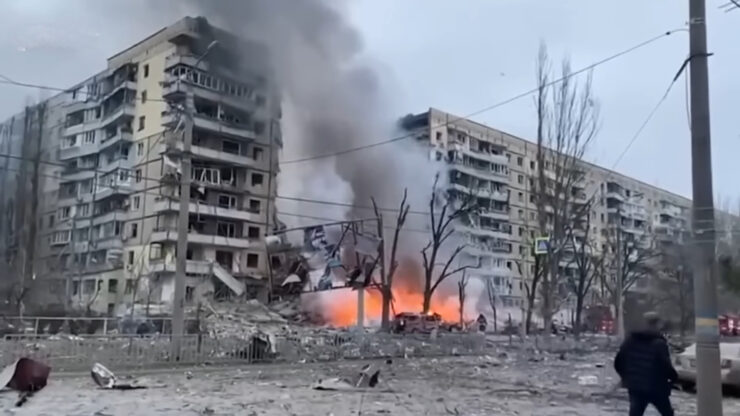
In 2024, Ukraine finds itself among the world’s most perilous nations due to the aftermath of the Russian invasion in February 2022.
The incursion by Russian forces into Ukraine has triggered widespread violence and gross violations of human rights. These factors have pushed Ukraine to a worrisome 153rd position out of 163 countries assessed in the Global Peace Index.
Current Security Situation: Ukraine’s security situation is influenced by both internal and external factors. The conflict with Russia, which began in 2014 with Russia’s annexation of Crimea and the subsequent separatist movement in Eastern Ukraine, remains a significant concern. While a ceasefire agreement was reached in 2015 (Minsk Agreement), sporadic clashes and tensions continue in the Donbas region.
Travel Considerations: Travelers considering a visit to Ukraine should carefully assess the security situation before planning their trip. The western regions of Ukraine, including cities like Lviv and Kyiv (Kiev), have generally been more stable and safe for tourists. However, regions near the conflict zone in Eastern Ukraine should be approached with caution.
Crime and Safety Concerns: Like many countries, Ukraine has areas with higher crime rates, particularly in larger cities. Petty theft, scams, and pickpocketing can occur, especially in crowded places and tourist areas. Travelers are advised to exercise caution, keep valuables secure, and be aware of their surroundings.
Political Stability and Protests: Ukraine has experienced periods of political instability and protests in recent years. While the political situation has improved since the 2014 revolution (Euromaidan), travelers should be aware that political demonstrations can occur. It’s recommended to avoid large gatherings and protests to ensure personal safety.
Crossing Borders and International Relations: Given the ongoing conflict with Russia, border crossings between Ukraine and Russia are complex and require careful planning. Travelers should stay updated on the latest information regarding border regulations and restrictions.
Cultural and Language Considerations: Understanding the local culture and norms can contribute to a safer and more enjoyable experience in Ukraine. Learning a few basic phrases in Ukrainian or Russian can help improve interactions and navigate daily activities.
9. Sudan
Sudan emerges as another of the globe’s dangerous nations for multiple compelling reasons. The country has been gripped by unrelenting violence and conflict, with the situation showing no signs of improvement.
With civil war embroiling the nation since 1983, the death toll has tragically surpassed 2 million lives. Additionally, the Sudanese government faces accusations of perpetrating genocide in the Darfur region, leading to the displacement of millions.
Adding to the distress, Sudan contends with extremist groups such as Al-Qaeda and ISIS, responsible for a string of terror attacks within its borders.
Political and Security Environment: Sudan has undergone significant changes in recent years, marked by the ousting of longtime President Omar al-Bashir in 2019. The transition to a civilian-led government followed a period of widespread protests and civil unrest. While this shift signaled positive change, Sudan’s journey towards political stability remains ongoing.
Internal Conflicts and Tensions: Sudan has faced internal conflicts in various regions, most notably in Darfur, South Kordofan, and Blue Nile. While efforts have been made to negotiate peace agreements and reduce violence, sporadic clashes and localized tensions continue to impact certain areas. Travelers are advised to stay informed about the security situation and potential risks in specific regions.
Travel Considerations: When considering travel to Sudan, it’s important to research the latest information on safety and security. The capital city, Khartoum, has generally been more stable, but travelers should exercise caution and avoid areas with ongoing protests or demonstrations.
Regional and Cross-border Dynamics: Sudan shares borders with countries like Egypt, Eritrea, Ethiopia, and South Sudan, each with its own unique political and security challenges. The dynamics in neighboring countries can sometimes influence the security situation in Sudan, making it essential for travelers to understand the broader context.
Cultural Heritage and Tourism: Sudan boasts a rich historical and cultural heritage, with ancient archaeological sites like the pyramids of Meroe and the temples of Soleb. While these attractions offer unique experiences, travelers should plan their visits with care and consider guided tours or local advice to ensure a safe and fulfilling journey.
Local Customs and Sensitivities: Understanding and respecting local customs, traditions, and cultural norms is crucial for a safe and positive travel experience in Sudan. Dress modestly, seek permission before taking photographs of individuals, and be mindful of religious sensitivities.
8. Central African Republic
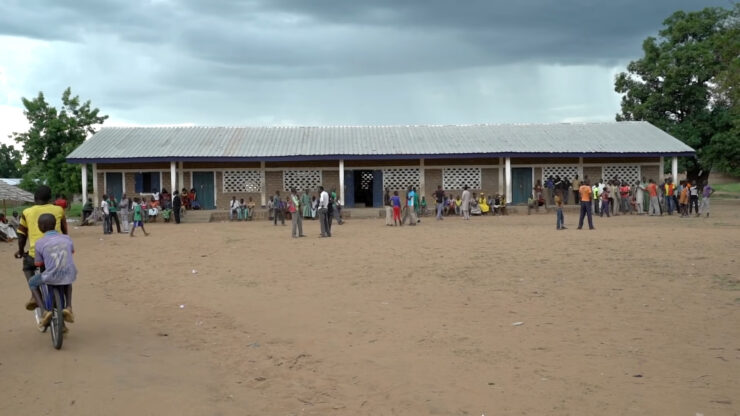
The Central African Republic holds a distressing place among the planet’s most perilous nations due to persistent conflict and an unyielding humanitarian crisis. This country has long been mired in violence and instability, with no clear resolution on the horizon.
With over half of its population requiring humanitarian aid, and millions displaced due to ongoing conflicts, the Central African Republic grapples with an overwhelming crisis. The ramifications of this violence have been profound, inflicting the loss of thousands of lives, causing injuries to many, and subjecting countless individuals to heinous acts such as rape.
Security Situation: The Central African Republic has faced ongoing violence and instability, often stemming from intercommunal clashes, rebel groups, and political upheaval. Armed groups, including those formed along religious and ethnic lines, have contributed to the fragile security environment in various parts of the country.
Internal Conflicts and Humanitarian Crisis: Ethnic and religious tensions have fueled internal conflicts in the Central African Republic, resulting in displacement, loss of life, and a humanitarian crisis. The country has experienced cycles of violence, with clashes often leading to civilian casualties and a deterioration of essential services.
Travel Considerations: Traveling to the Central African Republic requires careful consideration and extensive research. The security situation can vary greatly from one region to another, and it’s essential to stay updated on the latest information from credible sources. International travel advisories often provide insights into areas to avoid and recommended safety precautions.
UN Peacekeeping Mission: The United Nations Multidimensional Integrated Stabilization Mission in the Central African Republic (MINUSCA) has been deployed to help stabilize the country and protect civilians. While MINUSCA’s presence is intended to improve security, travelers should be aware that challenges remain in various parts of the country.
Access and Infrastructure: The Central African Republic’s infrastructure and access to basic services can be limited, especially in more remote areas. This can impact travel logistics, emergency response capabilities, and overall comfort for travelers.
Cultural Sensitivities and Customs: Understanding and respecting local customs and cultural sensitivities is crucial when traveling to the Central African Republic. Engaging with local communities and seeking guidance from residents can enhance safety and create a more meaningful travel experience.
7. Somalia
Claiming the 156th spot in the latest Global Peace Index, Somalia secures its position as the eighth most hazardous country on the planet.
Somalia has confronted substantial challenges in recent times, characterized by political instability, insecurity, and rampant poverty.
The humanitarian situation within Somalia is dire, with over 6 million people in dire need of assistance. The country is a breeding ground for several terrorist factions, including Al-Shabaab, responsible for brutal attacks on civilians.
Although Somalia’s government has taken steps to enhance security in the nation, progress has been incremental. Much work remains to render Somalia a safe haven for its civilian population.
Security Situation: Somalia has faced decades of internal conflict, political turmoil, and the rise of extremist groups, notably Al-Shabaab. The presence of Al-Shabaab has led to instances of violence, attacks, and bombings, particularly in major cities like Mogadishu. Travelers considering a visit to Somalia must carefully evaluate the security environment and stay informed about the latest developments.
Travel Considerations: Traveling to Somalia is not recommended for leisure purposes due to the ongoing security risks. Foreign governments often issue strict travel advisories, emphasizing the dangers posed by armed groups and the unpredictable security situation. Those involved in humanitarian work or official missions should adhere to strict safety protocols and receive guidance from relevant authorities.
Humanitarian Crisis: Somalia has also faced humanitarian challenges, including food insecurity, displacement, and lack of access to basic services. These challenges are often exacerbated by conflict, climate-related issues, and the displacement of populations.
Piracy Concerns: Somalia’s coastline has been associated with piracy in the past, particularly in the waters of the Gulf of Aden and the Indian Ocean. While international efforts have led to a decrease in piracy incidents, it’s important for maritime travelers to be aware of potential risks and adhere to recommended safety measures.
Foreign Relations and Involvement: Somalia’s geopolitical context includes regional tensions, involvement of international actors, and ongoing efforts to stabilize the country. The presence of African Union troops and international peacekeeping efforts (AMISOM) underscores the complex dynamics at play in Somalia’s security landscape.
Local Insights and Cultural Understanding: For those working or operating within Somalia, engaging with local communities and understanding cultural norms is vital for safety and effective interaction. Somali society is diverse, and building trust and respect are essential components of navigating the environment.
6. Democratic Republic of Congo
Enduring a prolonged era of violence and conflict, the Democratic Republic of the Congo remains ensnared in a deteriorating situation. The nation’s governance teeters on extreme instability, while a web of armed groups operates across its expanse.
Coupled with elevated poverty levels and glaring inequality, criminal gangs and terrorist entities find fertile ground for recruitment.
Living within the DRC comes with inherent danger, and this condition seems poised to persist, cementing its position among the world’s most hazardous countries.
Security Landscape: The DRC has experienced periods of armed conflict, including a devastating civil war known as the Great African War (1998-2003), which involved multiple countries and armed groups. Despite peace agreements and international interventions, certain regions continue to experience instability due to the presence of various armed militias and rebel groups.
Internal Displacement and Humanitarian Concerns: Years of conflict and violence have resulted in internal displacement and humanitarian crises. Millions of Congolese have been forced to flee their homes, leading to overcrowded camps and limited access to essential services. The presence of displaced populations can impact security dynamics in certain areas.
Travel Considerations: Travelers considering a visit to the DRC must carefully assess the security situation and stay informed about the latest developments. The country’s vast size and diverse regions mean that security conditions can vary significantly. Some regions are more stable and accessible, while others may pose higher risks due to ongoing conflicts.
Peacekeeping Efforts: The United Nations Stabilization Mission in the Democratic Republic of the Congo (MONUSCO) is one of the largest UN peacekeeping missions, tasked with maintaining stability and protecting civilians. While MONUSCO’s presence has contributed to improvements in certain areas, challenges remain due to the scale of the country’s security concerns.
Resource Exploitation and Conflict: The DRC’s rich mineral resources, including coltan, gold, and cobalt, have been linked to conflicts and power struggles. The illicit trade of minerals has often fueled violence and instability, contributing to the security challenges in the region.
Cultural Diversity and Local Context: The DRC is home to a diverse range of ethnic groups, languages, and cultures. Engaging with local communities and understanding cultural norms is essential for both safety and effective interaction. Respect for local customs and sensitivities can contribute to positive experiences.
5. South Sudan

Stepping into the fifth spot on the list of the most perilous countries in 2024 is South Sudan. The country has been beleaguered by unceasing violence and internal conflict since its split from Sudan in 2011.
The conflict’s grim toll includes over 400,000 lives lost and a staggering 2 million individuals displaced. South Sudan’s landscape is also dotted with numerous armed factions, adding to the challenges of daily life.
Furthermore, the nation’s infrastructure lies in tatters, with critical services like healthcare and education remaining scarce commodities.
Security Landscape: South Sudan’s history has been marked by ethnic tensions and conflicts, often fueled by competition for resources and political power. The country experienced a brutal civil war from 2013 to 2018, leading to significant loss of life, displacement, and destruction of infrastructure. Although a peace agreement was signed in 2018, the security situation remains fragile, with sporadic outbreaks of violence in certain regions.
Humanitarian Crisis and Displacement: The conflicts in South Sudan have led to one of the world’s most severe humanitarian crises. Millions of people have been internally displaced or have sought refuge in neighboring countries. The lack of access to basic services, including healthcare and education, has contributed to the dire situation.
Travel Considerations: Traveling to South Sudan requires careful assessment of the security environment and consideration of the latest travel advisories. Due to ongoing conflicts, many foreign governments advise against non-essential travel to the country. Travelers involved in humanitarian work or official missions should adhere to strict safety protocols and receive guidance from relevant authorities.
Ethnic Dynamics and Conflict Zones: South Sudan’s ethnic diversity is a source of strength but has also been a trigger for conflicts. Certain regions, particularly those with historical ethnic tensions, are more susceptible to violence. It’s important to be aware of potential risks associated with travel to these areas.
Peacekeeping Efforts: The United Nations Mission in South Sudan (UNMISS) has been deployed to help stabilize the country and protect civilians. UNMISS plays a crucial role in facilitating peace and security, but challenges persist due to the scale and complexity of the security situation.
Cultural Sensitivities and Adaptation: Understanding local customs and sensitivities is vital when traveling to South Sudan. Respecting cultural norms and engaging with local communities can contribute to a safer and more positive travel experience.
4. Russia
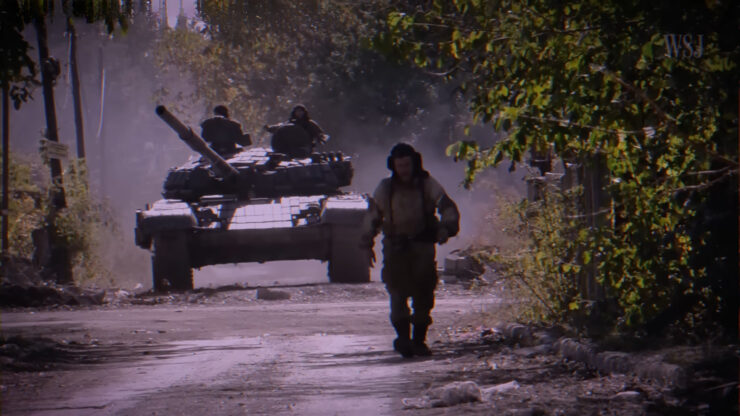
Taking the fourth position among the world’s most perilous countries in 2024 is Russia, primarily owing to its elevated homicide rate and growing political instability. The country witnesses a notable homicide rate, tallying approximately 9.5 murders per 100,000 individuals.
This alarming figure is often attributed to Russia’s prevalent poverty and inequality, compounded by a weakened rule of law and widespread corruption.
Furthermore, Russia grapples with escalating political instability, as evidenced by the upsurge in protests and opposition movements. These trends might potentially escalate violence and sow seeds of civil unrest in the time ahead.
General Safety Landscape: Like any country, Russia has areas with varying levels of safety. Major cities such as Moscow and St. Petersburg are generally safe for tourists, with well-developed infrastructure and a visible police presence. However, as with any travel destination, travelers should exercise caution, be aware of their surroundings, and take common-sense safety precautions.
Crime and Scams: As in many large cities, petty crimes like pickpocketing can occur in tourist-heavy areas. Being vigilant with belongings, especially in crowded places, is advisable. Travelers should also be cautious of scams, such as overcharging by taxis or unofficial tour operators.
Political Landscape and Demonstrations: Russia has seen political protests and demonstrations in recent years, often related to issues of governance and civil rights. While peaceful protests are generally allowed, it’s important for travelers to avoid participating in or engaging with such events, as they can escalate and lead to arrests or confrontations with authorities.
Cultural Adaptation: Understanding and respecting local customs and norms is important for a positive and safe experience in Russia. Learning a few basic phrases in Russian and being open to cultural differences can facilitate interactions with locals.
Travel in Remote Areas: Russia’s vast size means that there are remote and less-traveled regions where access to services and infrastructure may be limited. Travelers exploring these areas should ensure they are well-prepared and informed about the conditions they may encounter.
Geopolitical Considerations: Geopolitical tensions between Russia and other countries can impact the perception of safety. Travelers should stay updated on the latest international developments and be aware of any travel advisories issued by their home countries.
3. Syria
Since 2011, Syria has been entangled in a catastrophic civil war, resulting in a tragic death toll exceeding 250,000 lives lost and over 7.6 million people internally displaced.
The conflict’s devastating impact reverberates through Syria’s crumbling infrastructure and the collapse of essential systems such as healthcare and education. The rise of terrorist groups like ISIS has further compounded the turmoil, manifesting in brutal attacks on innocent civilians.
Additionally, Syria’s geographical proximity to Europe has spawned an unparalleled refugee crisis. In light of these dire circumstances, Syria emerges as the third most dangerous country in 2024 and a challenging destination for US citizens due to these grave challenges.
Security Landscape: Syria’s civil war, which began in 2011, has led to widespread violence, destruction, and displacement. The conflict involves multiple parties, including the Syrian government, rebel groups, and extremist organizations. As a result, large areas of the country have experienced significant security challenges and infrastructure damage.
Humanitarian Crisis: The conflict has triggered one of the world’s most severe humanitarian crises. Millions of Syrians have been internally displaced, and millions more have sought refuge in neighboring countries. Access to essential services such as healthcare, education, and clean water remains limited for many.
Travel Considerations: Due to the ongoing conflict and complex security situation, most foreign governments advise against all travel to Syria. Travelers are strongly discouraged from attempting to visit the country, as the risks far outweigh any potential benefits.
Geopolitical Dynamics: Syria’s conflict has drawn the involvement of multiple international actors, including foreign governments and armed groups. The complexity of these interactions adds to the unpredictability of the security environment.
Cultural Heritage and Destruction: Syria boasts a rich cultural history and ancient archaeological sites. However, the conflict has led to the destruction of many historical treasures, impacting both Syria’s cultural heritage and the tourism potential it once held.
Crisis of Displacement: The large-scale displacement of Syrians has led to overcrowded refugee camps and challenges in providing adequate shelter, food, and healthcare. Travelers engaging in humanitarian work should do so through recognized organizations with established safety protocols.
2. Yemen

Presently occupying the second slot on the list of the world’s most perilous countries, Yemen remains entrenched in a civil war since 2015, its circumstances growing increasingly dire.
The conflict has exacted a staggering toll, claiming tens of thousands of lives while displacing millions. Vital necessities like healthcare and education have become scarce commodities, with famine casting a harrowing shadow.
Tragically, this war-torn environment has opened the doors for terrorist groups like Al-Qaeda and ISIS to establish a foothold, further heightening the danger faced by civilians.
Conflict and Humanitarian Crisis: Yemen’s conflict, which began in 2015, involves multiple parties, including the Yemeni government, Houthi rebels, and international actors. The conflict has led to widespread violence, displacement, and damage to infrastructure. As a result, Yemen is facing one of the world’s most severe humanitarian crises, with millions in need of assistance.
Humanitarian Situation: The conflict has led to food and water shortages, healthcare system collapse, and displacement of millions of Yemenis. The dire humanitarian situation poses immense challenges for the population, impacting their safety, well-being, and access to basic necessities.
Travel Considerations: Due to the ongoing conflict, most foreign governments strongly advise against all travel to Yemen. The security risks are extremely high, and travelers’ safety cannot be guaranteed. Attempting to visit Yemen puts individuals at risk of violence, kidnapping, and the lack of essential services.
Geopolitical Dynamics: Yemen’s conflict has drawn international attention, with regional and global powers involved in various capacities. Geopolitical complexities add to the volatility of the security environment and further complicate the question of safety.
Cultural and Historical Richness: Yemen boasts a rich history, cultural heritage, and ancient architecture. However, many of these treasures have been affected by the conflict. The preservation of Yemen’s cultural heritage has been compromised due to the ongoing violence.
Humanitarian Engagement: Travelers with a desire to support Yemenis during these challenging times can consider contributing through established humanitarian organizations. However, engaging in such efforts requires careful consideration of safety, logistics, and adherence to relevant protocols.
1. Afghanistan
At the forefront of danger stands Afghanistan, securing the unenviable title of the most hazardous country globally due to its unending conflict and instability.
Over two decades of ceaseless warfare have ravaged the nation, resulting in one of the lowest Human Development Indices worldwide. The relentless conflict begets elevated levels of violence and insecurity, with civilians enduring the harshest repercussions.
Compounded by systemic corruption, Afghanistan’s governance struggles to deliver fundamental services and enhance the nation’s infrastructure. This amalgamation of factors places Afghanistan at the pinnacle of danger, underscoring the immense challenges it confronts.
Security Landscape: Afghanistan has experienced multiple phases of conflict, including resistance against Soviet occupation, civil wars, and the rise and fall of the Taliban regime. The country’s recent history has been dominated by the presence of international forces, counterterrorism efforts, and efforts towards stability.
Post-Conflict Reality: Following the fall of the Taliban regime in 2001, Afghanistan underwent significant changes, including the establishment of a new government, rebuilding of infrastructure, and efforts to enhance security. However, the security situation remains fluid due to the presence of various armed groups and ongoing insurgent activities.
Travel Considerations: Due to the complex security environment, most foreign governments strongly advise against all travel to Afghanistan. The risks are extremely high, and travel to the country is associated with dangers such as violence, kidnapping, and terrorism.
Humanitarian Challenges: Afghanistan faces numerous humanitarian challenges, including poverty, lack of access to healthcare, and educational opportunities. While international aid and development efforts have made progress, the impact of the conflict and ongoing insecurity continue to hinder the nation’s development.
Geopolitical Dynamics: Afghanistan’s geopolitical position has made it a focal point for international interests, leading to complex dynamics involving neighboring countries and global powers. The interaction of various stakeholders adds to the intricate security landscape.
Cultural Heritage and Resilience: Afghanistan’s rich cultural history has been impacted by decades of conflict. However, the resilience of its people and efforts to preserve cultural heritage provide glimpses of hope amid the challenges.
Humanitarian and Peacebuilding Engagement: For those interested in supporting Afghanistan’s people, contributing through established humanitarian organizations can make a positive impact. Engaging in peacebuilding efforts requires a thorough understanding of the complexities and safety considerations.
FAQ
Top 10 Safest Countries in the World?
1. Iceland: Known for its low crime rates and strong social and political stability.
2. New Zealand: Offers a safe environment with low crime and a well-functioning government.
3. Portugal: Renowned for its peaceful atmosphere and welcoming community.
4. Austria: Boasts excellent safety standards and a high quality of life.
5. Denmark: Offers a secure environment and effective governance.
6. Singapore: Known for its strict laws and orderly society.
7. Canada: Offers a peaceful and diverse society with low crime rates.
8. Switzerland: Renowned for its safety, stability, and high standard of living.
9. Japan: Known for its low crime and strong law enforcement.
10. Czech Republic: Offers safety and security in a historically rich setting.
Most Dangerous Country in South America 2024?
Venezuela: Due to its ongoing political and economic challenges, Venezuela is considered one of the most dangerous countries in South America in 2024.
Which city in Europe has the most crime?
The crime rates in cities can fluctuate, and it’s important to rely on updated statistics. However, historically, cities like Marseille in France, Barcelona in Spain, and Naples in Italy have been known for relatively higher crime rates compared to other European cities.
Which country has the most murders in Europe?
As of my last knowledge update in September 2021, Russia has been reported to have one of the highest homicide rates in Europe. It’s recommended to refer to the latest crime statistics for accurate and up-to-date information.
Which city has the most crime on earth?
Crime rates can change over time and can vary based on different factors. Historically, cities like Caracas in Venezuela, San Pedro Sula in Honduras, and Port Moresby in Papua New Guinea have been associated with high crime rates. However, it’s important to consult the most recent crime data to get an accurate picture of the current situation.
Final Words
Understanding the global landscape of peace and security is crucial for comprehending the challenges faced by nations around the world. The Global Peace Index provides valuable insights into the levels of violence, governance effectiveness, and militarization that countries experience. By examining these factors, we can better appreciate the efforts required to foster a more peaceful and stable world.

